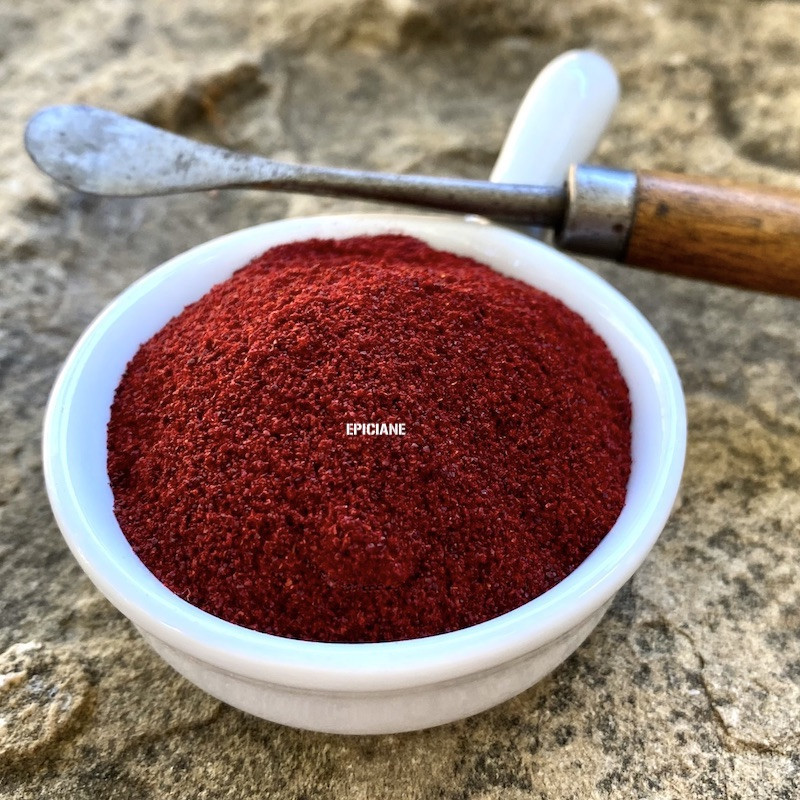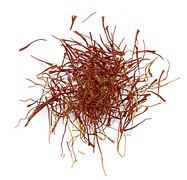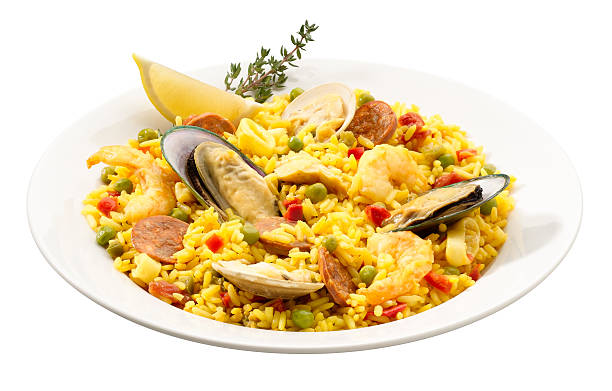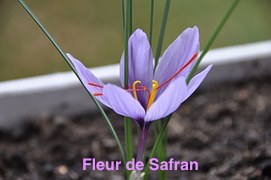
Reference: safranpistil



The aroma of saffron is unique, captivating, and unforgettable! On the palate, it is an explosion of absolutely unique flavors...
Essential in paellas, it will also be delicious with fish and shellfish, rice, chicken, as well as rabbit.
 Delivery
Delivery
Mondial Relay
 Returns
Returns
See conditions
 Payments
Payments
100% secure
The difference between Spanish and Iranian saffron comes not only from the terroir and climate in which they grew but also from the fact that they are two subspecies of the same "Crocus sativus." Their taste and aroma differ, but both will impart a wonderful saffron flavor to your dishes. It is very difficult to say which one is better than the other...! In fact, both are delicious...!
°°°
 Saffron has an unforgettable warm aroma and an extraordinary taste, unique in the world of spices! Anyone who has never tasted saffron doesn't know what they're missing...! Its strong aromatic power allows it to be used in homeopathic doses: in fact, it's considered that just 1/10th of a gram (called "1 dose") is enough to flavor a dish for 3 people. With 1 gram of saffron, you will flavor a dish for 30 people! So, despite its high price, this spice won't be the most expensive ingredient in your dish!
Saffron has an unforgettable warm aroma and an extraordinary taste, unique in the world of spices! Anyone who has never tasted saffron doesn't know what they're missing...! Its strong aromatic power allows it to be used in homeopathic doses: in fact, it's considered that just 1/10th of a gram (called "1 dose") is enough to flavor a dish for 3 people. With 1 gram of saffron, you will flavor a dish for 30 people! So, despite its high price, this spice won't be the most expensive ingredient in your dish!
The saffron, here in powder form, has been pre-ground and does not require the maceration needed for the pistil, as it mixes immediately with the food. Therefore, it can be added to the dish later, which better preserves its taste qualities.
Saffron is the main element in paella, risotto, and refined fish and shellfish dishes, to which it brings its wonderful aroma and beautiful golden color. You can also enjoy it in fish soups, rice, bouillabaisse, and even with certain white meats, like chicken or rabbit.
Combined with saffron, these two meats will surprise you, simply cooked in a pot with tomato, onions, and garlic. Adding saffron will turn it into a royal dish!
Saffron is also widely used in Arabic (for certain couscous or certain tagines), Indian, and Iranian cuisines.
In Switzerland and Sweden, it is incorporated into a type of brioche. Finally, it is used in alcoholic drinks like Chartreuse and Izarra.

Origin: Spain or Iran, depending on the batch.
Scientific name: Crocus sativus
The plant is believed to have originated in Crete, not Central Asia as once thought, and was first cultivated in Greece over 3,500 years ago! Saffron is made from the three red stigmas (or pistils) of a small bulb from the Iridaceae family, which closely resembles the spring crocus found in our gardens and the autumn colchicum, which is very dangerous as it is highly toxic! The length of the stigmas ranges from 2.5cm to 3.2cm.
The saffron bulb is a perennial plant that no longer exists in the wild! In fact, the pollen of the flowers is sterile, making saffron dependent on humans for reproduction! The bulbs (or more precisely the "corms" as they are properly called) do not survive the blooming period but give up to 10 offsets, which will produce new plants after humans divide them. After a summer rest, the fine vertical leaves appear, followed by purple flowers in October. Each flower contains a single "style" with three forks, each ending in a dark red stigma. These stigmas are what are sought after for their magical taste and powerful fragrance.

The flowers must be picked quickly, as after blooming at dawn, they wither rapidly during the day. This picking is done by hand, flower by flower, gently to avoid damaging the stigmas. After being separated from the petals, the stigmas must be quickly dried to prevent mold. It takes about 150 flowers, which will yield 450 threads (or stigmas), to obtain just 1g of dried saffron. A freshly picked flower provides 0.03g of fresh saffron and 0.007g of dried saffron, resulting in nearly 80% weight loss! To obtain 450g of dried saffron, it takes about 50,000 flowers, or an area of cultivation equivalent to a football field...!!! All this work, entirely manual, necessary to produce such small quantities of saffron explains its high price, and not its rarity, as it grows easily in many temperate regions around the world. The global production of saffron is about 300 tons per year, with Iran and Spain alone accounting for nearly 80% of the global production.
In Europe, at least three varieties of saffron are cultivated. The two Spanish varieties have a milder aroma and fragrance, the Italian varieties are more potent, while the most intense varieties are from Macedonia, Greece, Iran, and India. Each country will produce saffron with a different taste due to these distinct strains and varieties.
Saffron thrives in climates close to the Mediterranean climate, tolerating relatively harsh winters with frosts of -10°C, and even short periods of snow. In excessively arid regions, it must be irrigated. The plant needs exposure to sunlight. However, many pests (rodents, insects, worms) and infectious agents may attack it, with the most destructive being the voles that devour the bulbs.
Aside from its extraordinary fragrance, saffron also contains a carotenoid, crocin, which is water-soluble and gives the golden yellow color to the dishes it flavors.
Because of its high price, saffron is still often replaced or mixed with other products, especially in foreign countries where regulations are less strict than here: for the pistils, it is best with safflower, or at worst with wood fibers dyed with sometimes harmful substances...! But for the powder, it's even easier for fraudsters: they replace part of the saffron with ground brick, turmeric, paprika, or sweet pepper! These substitutions allow fraudsters to make significant profits because these substitutes are sold as pure saffron, and of course, at the price of pure saffron...!
 </h3
</h3Data sheet
Reference: safranpistil
Reference: EPI2301003
Reference: safranpistil

The aroma of saffron is unique, captivating, and unforgettable! On the palate, it is an explosion of absolutely unique flavors...
Essential in paellas, it will also be delicious with fish and shellfish, rice, chicken, as well as rabbit.